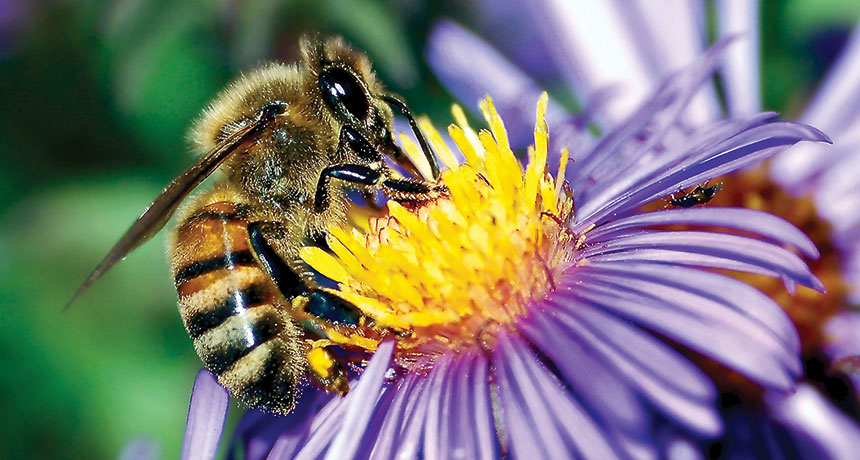Bacteria in flowers may boost honeybees’ healthy gut microbes
Fructobacillus may be critical to larvae gaining ability to digest insects’ diet, study suggests

BUSY BEE A honeybee may collect beneficial bacteria while it’s harvesting pollen and nectar from flowers.
Swallowtail Garden Seeds